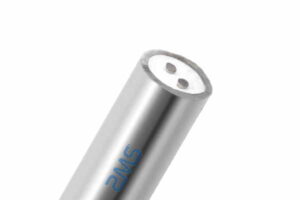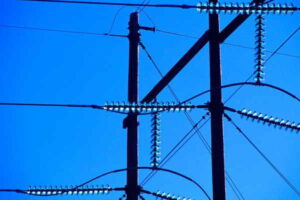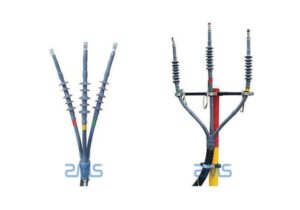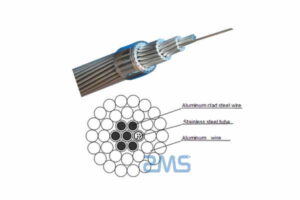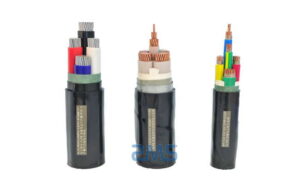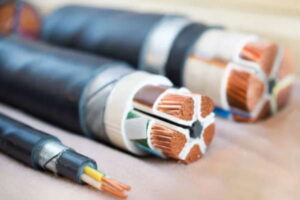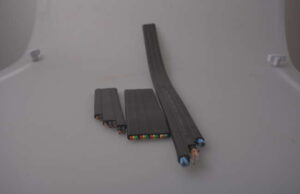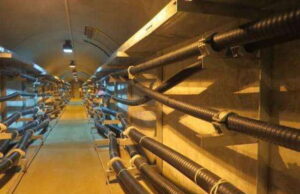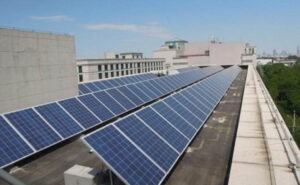MI armored heating cable, also known as mineral insulated heating cable, is a combination of electric heating wire material, inorganic insulation (such as magnesium oxide, alumina, etc.), and metal protection tube, which is a solid body compacted closely by mold, especially suitable for high-temperature pipeline tracing heat.
INFORMATION
Welcome to the ZMS CABLE information blog, here is the cable industry knowledge sharing and technology popularization of the professional world. In this section, we focus on cable technology, product applications, and industry knowledge, carefully crafting a series of easy-to-understand and practical content, to provide readers with authoritative technical support and comprehensive industry interpretation.
Breakdown The Types Of Insulators, How Many Do You Know?
What Is An Overhead Line Insulator?
On one end of the high-voltage power line connection tower hangs a lot of disc-shaped insulators, which are designed to increase the creepage distance, usually made of glass or ceramic, and are called overhead line insulators.
Briefly Explain The Role of Cable Termination Joints and Installation Requirements
Cable termination and joints are a very important process in cable construction, and the quality of cable termination and joints directly affects the quality of the entire electrical engineering construction.
Therefore, in the process of cable construction, we must conduct a comprehensive analysis of all aspects of the cable to ensure that the cable can work effectively and stably for a long time, which is also the main role of cable termination and joint work.
OPPC Fiber Optic Cable In The Application Of Low- And Medium-Voltage Grid Communications
Application Of OPPC Fiber Optic Cable
OPPC fiber optic cable is a new type of special fiber optic cable for a powerful communication system.
It is a fiber optic cable with fiber optic units compounded in the wire in the traditional phase wire structure.
It also makes full use of the power system’s line resources, especially the power distribution system, to avoid conflicts with the outside world in terms of frequency resources, routing coordination, electromagnetic compatibility, etc.
Make it has the dual function of transmitting electricity and communication.
Introduction To Some Wire And Cable Products And Standards
UL758 AWM Electronic Wire Profile
Electronic Wire Product Range
Electronic wire as the world’s most widely used in 3C consumer electronics, home appliances, small appliances, and IT / AV products such as wire categories, deserves our special attention. At present, only the United States UL developed the relevant standard UL758 (Appliance WiringMaterial, referred to as AWM).
Generally contains single-core insulated wire, multi-core with sheathing, fiber optic, and multi-core wire with fiber optic as the insulated core. These wires can be used as internal wires for appliances, as external connections between appliances, and as cores in multi-core wires.
5 Minutes To Know The Difference And Application Of DC Cable And AC Cable
DC and AC cable is an essential part of any electrical system, providing the means for transmitting electrical energy from one point to another. In this article, we will explore the differences between DC and AC cables, their properties, and their applications.
Characteristics of Cables and Their Selection
Cables are an essential component in many electrical and electronic systems. They are used to transmit electrical signals and power from one device to another and come in a wide variety of types and sizes.
For cables to work properly, they must meet certain standards and specifications that ensure their compatibility and performance.
A Detailed Description Of The Types Of Underground Cables And Their Respective Applications
Underground cables are an essential component of modern electrical systems, providing a safe and efficient way to transmit electrical power over long distances. Unlike overhead power lines, which are vulnerable to damage from storms and other natural disasters, underground cables are protected by being buried underground, making them a reliable and resilient option for transmitting electricity.
There are several different types of underground cables, each designed for specific applications and environments.
Design Of Automotive High-Voltage Cables
Electric passenger cars, as the name implies, are powered by electricity, so they must use high-power motors and large-capacity batteries. And to reduce charging time, high-voltage, high-current charging technology is used, which requires the use of high-voltage electrical systems.
The Difference Between The Distributed PV System And The Centralized PV System
Photovoltaic power generation is a very common new energy source today. Compared to hydropower and wind power, its construction is not so demanding in terms of area selection. Hydropower is built in areas with abundant water resources, such as river sections with high water flow.
And wind power is generally built in the open terrain of the mountains, hills, and year-round wind. The photovoltaic is different, centralized large-area photovoltaic built in the desert, the Gobi areas, making full use of abandoned land resources.

